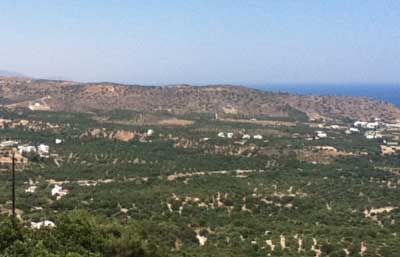Agios Georgios Crete
The village of Agios Georgios is located approximately 14km away
from Sitia and around 7km east of Agia Galini. It is listed in
the 1583 Venetian census as Turtulus and was renamed in 1955.
The village is considered to be in one of the most significant
archaeological areas. Excavations on the hill of Mandalia have
uncovered cemeteries from the Minoan and Geometric Periods and a
Minoan village in the Prophitis Ilias region.
This villa has some 30 rooms arranged on four terraces connected
by stairways. To date, only about half of the area has been
excavated and it is possible that there may yet be found an
upper storey. Findings indicate that the settlement thrived from
the Middle to the Late Minoan period until it was destroyed,
probably by an earthquake, and subsequently plundered. Today,
the village itself is an attractive seaside resort with plenty
of water resulting in green fertile countryside and some
beautiful beaches.
Places to visit in the village include the Laographic Museum
which has an interesting collection of artefacts traditionally
used by the people of the region. The collection includes tools,
domestic items and textiles. The museum is laid out in several
rooms and there are representations of traditional workshops for
basket making and weaving as well as a representation of a
traditional barber shop. The road from Agia Galini leading in to
Agios Georgios passes by a couple of little churches. Neither
are particularly old, Agios Nikolaos dates from 1949 but has the
ruins of another older church next to it.
The second church is a small stone built church which is quite
new but very sympathetically constructed to blend in with the
surrounding countryside. From here there are several paths which
lead down to small, tranquil pebble beaches which have some
facilities of umbrellas, sunbeds and a couple of tavernas.

